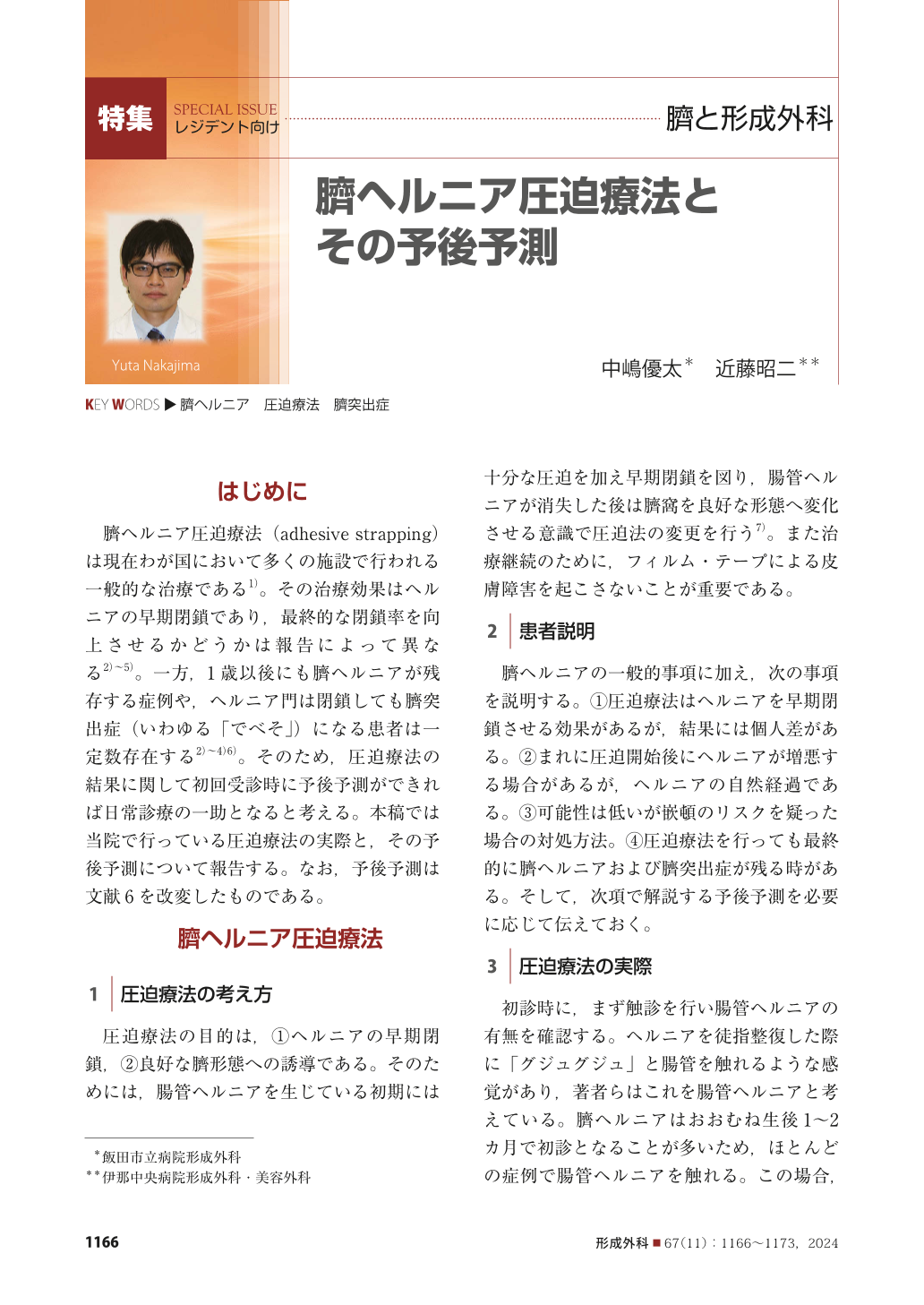Japanese
English
- 有料閲覧
- Abstract 文献概要
- 1ページ目 Look Inside
- 参考文献 Reference
はじめに
臍ヘルニア圧迫療法(adhesive strapping)は現在わが国において多くの施設で行われる一般的な治療である 1)。その治療効果はヘルニアの早期閉鎖であり,最終的な閉鎖率を向上させるかどうかは報告によって異なる 2)~5)。一方,1歳以後にも臍ヘルニアが残存する症例や,ヘルニア門は閉鎖しても臍突出症(いわゆる「でべそ」)になる患者は一定数存在する 2)~4)6)。そのため,圧迫療法の結果に関して初回受診時に予後予測ができれば日常診療の一助となると考える。本稿では当院で行っている圧迫療法の実際と,その予後予測について報告する。なお,予後予測は文献6を改変したものである。
Even when adhesive strapping is used for an umbilical hernia, a certain number of patients will have a persistent hernia and a protuberant umbilicus. When an intestinal hernia is present, sufficient pressure can be applied with a cotton ball and film, aiming for early closure of the hernia. After the intestinal hernia disappears in about 2–3 weeks, compression is applied using a temporary stopper and surgical tape to form an umbilicus with a good shape, with treatment ending by the time the patient starts walking, at the latest.
A retrospective study of 103 cases revealed that it is possible to predict the outcome of the use of adhesive strapping by classifying the shape of the umbilicus at the patientʼs initial visit at 1–3 months of age into three categories: the smooth-surfaced hemispherical type, the crescent type with a skin depression at the tip of the hemispherical type, and the balloon type that is swollen in a spherical shape. Over an average follow-up period of 15 months, compared to the hemispherical type, the balloon type (odds ratio [OR] 27, 95%CI: 5–130) and the crescent type (OR 14, 95%CI: 4–48) were more likely to develop a protuberant umbilicus. The umbilical hernia was more likely to persist in the crescent type (OR 15, 95%CI: 1.8–131).

Copyright© 2024 KOKUSEIDO CO., LTD. All Rights Reserved.


